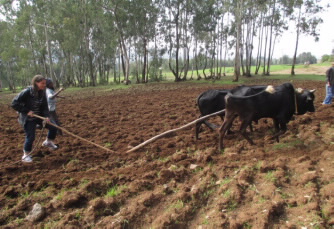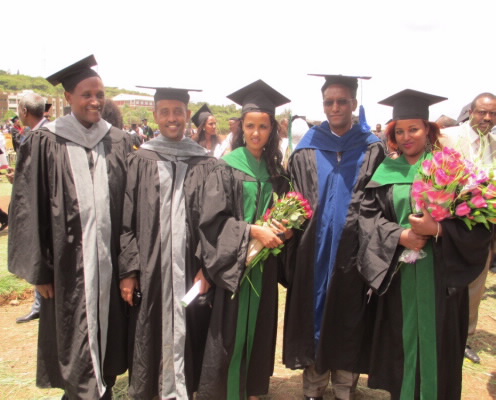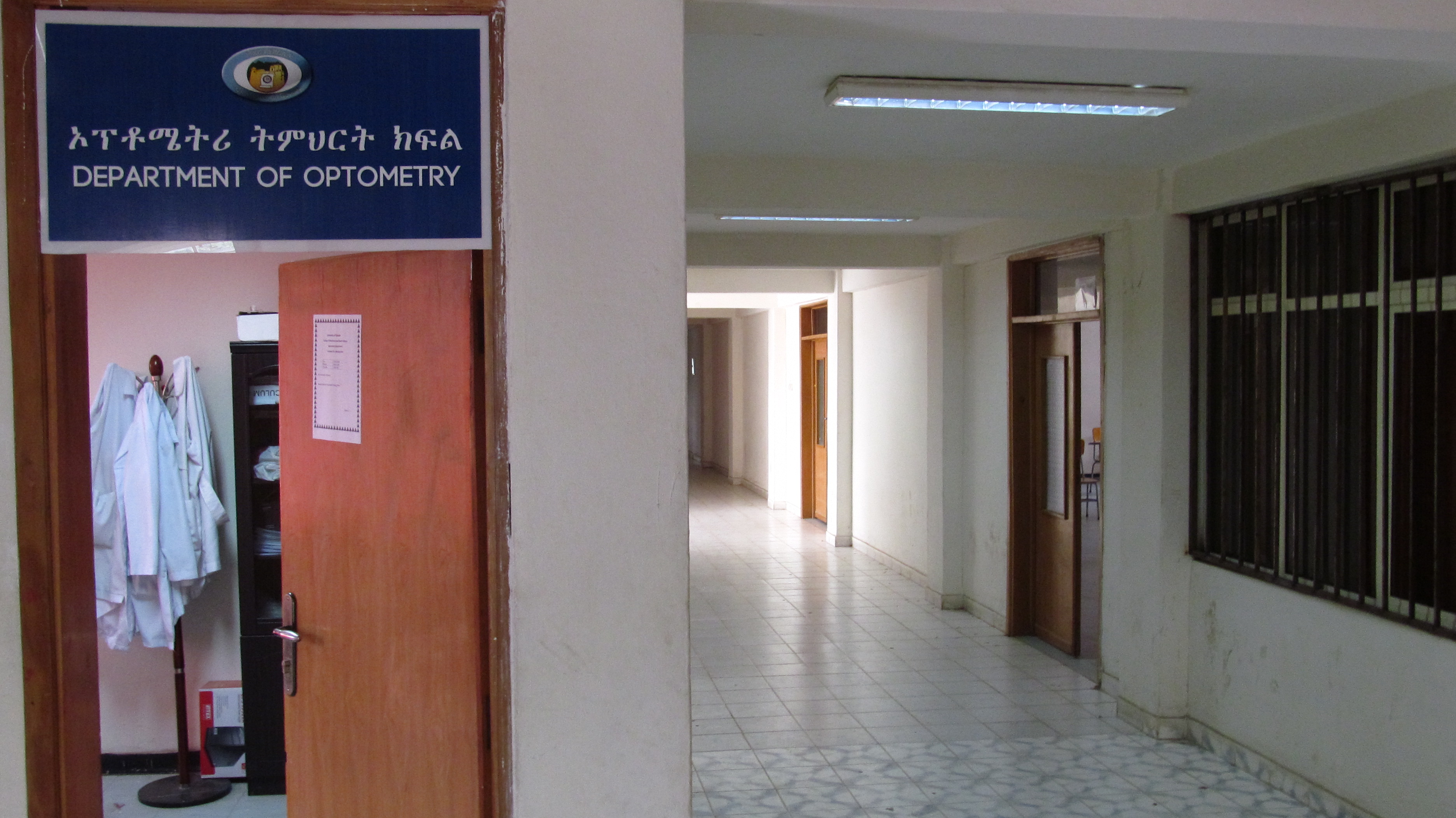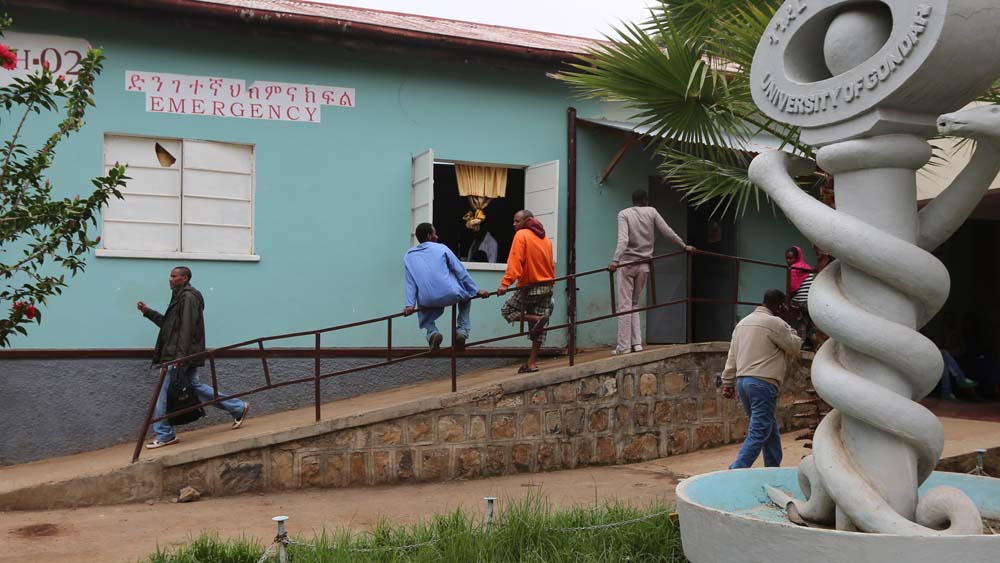By Tamiru Berhanu Denka, DVM
University of Gondar, Faculty of Veterinary Medicine
I was voluntary and happy when requested to be part of the Rabies Knowledge Attitudes and Practice assessment in and around Gondar. The University of Gondar team was established ahead of the arrival of Ohio State teams, and was made up of lecturers and assistant professors from College of Medicine and Health Sciences (CMHS) and the Faculty of Veterinary Medicine (FVM).
Tdele Atnafu form the School of Pharmacy, and myself form FVM went to two districts: Debark and Woreta, 105 km and 120 km respectively away from Gondar. Dr. Reta Tesfaye (FVM) and Debasu Damtie (CMHS) went to different places in Gondar. The mission of our team in these different places was to contact responsible government bodies and to discuss and debrief the rabies project objective in Gondar particularly, as well as Ethiopia at large, before beginning work.

The Faculty of Veterinary Medicine, UOG, Welcoming Ohio State students at Hotel Lamergeyer.
After the arrival of the Ohio State team, Dr. Wassie Molla, coordinator of the project from UOG, held a meeting to allow the teams from Ohio State and UOG to meet and discuss the interview questions, recording on the ipad, and consent of interviewees at the meeting hall of FVM.
The next step was to start the job– interviewing various individuals and professionals as per the project proposal. Interviewing individuals is not an easy thing to do. However, our prior communication and discussion helped us to interview efficiently. Everyone was welcoming and eager to participate in these interviews. As we continued on, I began to see how important the issue of rabies is, and how much it affects my country. Everywhere we went people stopped their daily activities to meet with us, allowing our groups to finish interviews more quickly than originally anticipated. Due to our efficiency, our teams were asked to take on the challenge of an additional city and we did so in stride. In total we surveyed four cities and conducted approximately 280 interviews in eight days.

Because, it is cultivation season, the periurban community leaders and communities were super busy plowing. At this critical time, it was necessary for us to meet this group of people for the interview. Then we decided to participate in plowing! (Ally, Ohio State 3rd year Vet Med student).
We then went to Addis Ababa to attend the rabies stakeholders workshop, held July 18-19. I am having an immense experience working in a team, appreciate learning about a different culture, and developing more friendships among the Ohio State team and from the University of Gondar as well.

Mr. Berihun (lecturer, Department of Nursing) did well plowing. The farmers were surprised when he started pushing the oxen.

Dr. Tamiru Berhanu (lecturer, University of Gondar, Faculty of Veterinary Medicine)


The UOG–OSU rabies project team members after successful interviews of various target groups of the study at Debark, 105 km from Gondar, where UOG is located.

Dr.Baye Molla and the OSU students (Laura Binkely, Karissa Magnuson, Korbin Smith and Allyson Sterman) before getting to attend the graduation ceremony of the UoG on July 6, 2013.

The MPH-VPH program started admitting students in 2012. The program was made successful due to the significant contribution of Ohio State professors. Dr.Molla (Ohio State professor) with two of the first batch of MPH-VPH graduates on June 6, 2013. The MPH-VPH students have green striped graduation gowns.From Left to Right: Dr.Achenef Melaku- Dean of FVM, UOG. Dr. Sileshi Nigatu- Head Department of Veterinary Public Health and Epidemiology.

University of Gondar graduation ceremony






































